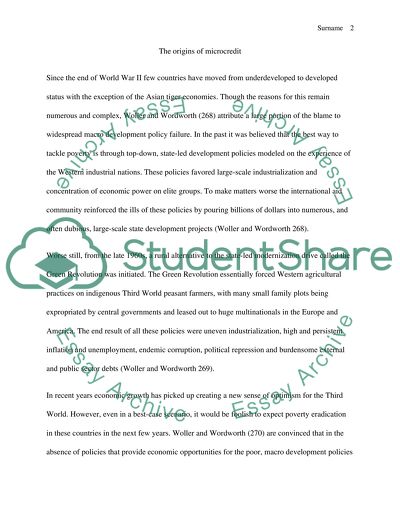Cite this document
(“Rural Poverty and Microcredit in Third World Economies Essay”, n.d.)
Retrieved from https://studentshare.org/environmental-studies/1413392-questions-based-essay-on-poverty-related-issues
Retrieved from https://studentshare.org/environmental-studies/1413392-questions-based-essay-on-poverty-related-issues
(Rural Poverty and Microcredit in Third World Economies Essay)
https://studentshare.org/environmental-studies/1413392-questions-based-essay-on-poverty-related-issues.
https://studentshare.org/environmental-studies/1413392-questions-based-essay-on-poverty-related-issues.
“Rural Poverty and Microcredit in Third World Economies Essay”, n.d. https://studentshare.org/environmental-studies/1413392-questions-based-essay-on-poverty-related-issues.


